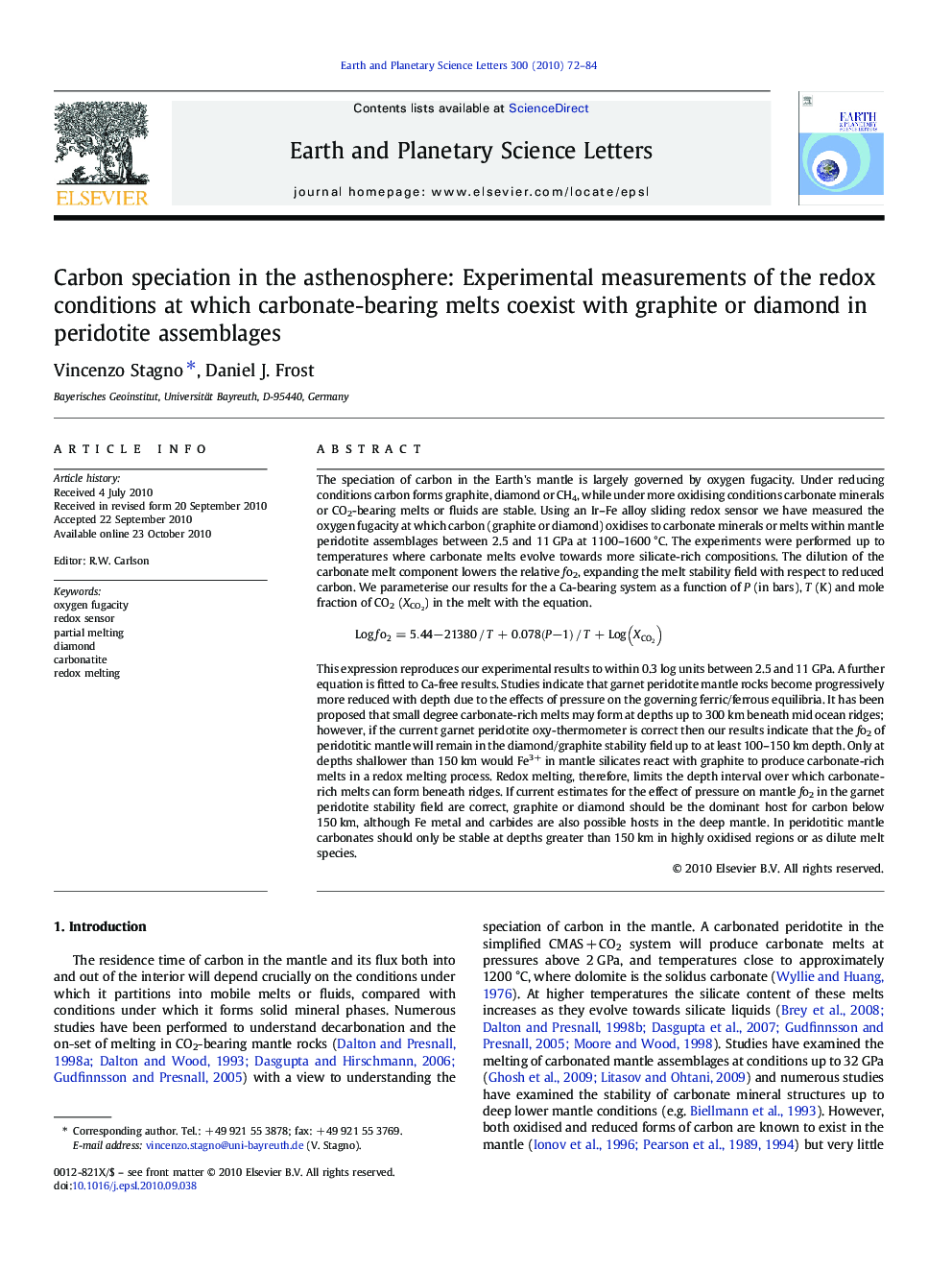| کد مقاله | کد نشریه | سال انتشار | مقاله انگلیسی | نسخه تمام متن |
|---|---|---|---|---|
| 4678232 | 1634840 | 2010 | 13 صفحه PDF | دانلود رایگان |

The speciation of carbon in the Earth's mantle is largely governed by oxygen fugacity. Under reducing conditions carbon forms graphite, diamond or CH4, while under more oxidising conditions carbonate minerals or CO2-bearing melts or fluids are stable. Using an Ir–Fe alloy sliding redox sensor we have measured the oxygen fugacity at which carbon (graphite or diamond) oxidises to carbonate minerals or melts within mantle peridotite assemblages between 2.5 and 11 GPa at 1100–1600 °C. The experiments were performed up to temperatures where carbonate melts evolve towards more silicate-rich compositions. The dilution of the carbonate melt component lowers the relative fo2, expanding the melt stability field with respect to reduced carbon. We parameterise our results for the a Ca-bearing system as a function of P (in bars), T (K) and mole fraction of CO2 (XCO2) in the melt with the equation.Logfo2=5.44 − 21380/T+0.078P−1/T+Log XCO2This expression reproduces our experimental results to within 0.3 log units between 2.5 and 11 GPa. A further equation is fitted to Ca-free results. Studies indicate that garnet peridotite mantle rocks become progressively more reduced with depth due to the effects of pressure on the governing ferric/ferrous equilibria. It has been proposed that small degree carbonate-rich melts may form at depths up to 300 km beneath mid ocean ridges; however, if the current garnet peridotite oxy-thermometer is correct then our results indicate that the fo2 of peridotitic mantle will remain in the diamond/graphite stability field up to at least 100–150 km depth. Only at depths shallower than 150 km would Fe3+ in mantle silicates react with graphite to produce carbonate-rich melts in a redox melting process. Redox melting, therefore, limits the depth interval over which carbonate-rich melts can form beneath ridges. If current estimates for the effect of pressure on mantle fo2 in the garnet peridotite stability field are correct, graphite or diamond should be the dominant host for carbon below 150 km, although Fe metal and carbides are also possible hosts in the deep mantle. In peridotitic mantle carbonates should only be stable at depths greater than 150 km in highly oxidised regions or as dilute melt species.
Journal: Earth and Planetary Science Letters - Volume 300, Issues 1–2, 15 November 2010, Pages 72–84